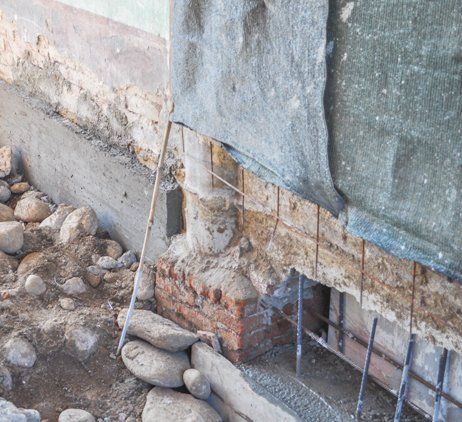Foundation issues are an enormous investment. Therefore, it is vital to fully comprehend all available methods of underpinning so you can select one which best meets the requirements of both your home and soil conditions.
Mass concrete techniques have been practiced for centuries. They involve expanding an existing foundation until it meets a suitable stratum layer.
Mass Concrete
Mass concrete Underpinning Melbourne is one of the oldest underpinning techniques, consisting of digging voids beneath existing foundations and filling them with concrete to reach an acceptable bearing stratum.
Once excavation is complete, shutters are secured into place before filling in the base with concrete to leave a narrow gap between old and new foundations. Dry sand cement packing mortar is then used to transfer loads between both foundations. Finally, gaps between bases can be connected using joggle joints.
Beam and base underpinning is an advanced underpinning solution in which a reinforced concrete beam is built above, below, or to replace existing footings and the weight is transferred onto mass concrete bases placed strategically throughout a building’s footprint.
Beam and Base
Underpinning technique known as the pit technique involves excavating box-shaped voids to a depth beneath existing foundations and filling them with concrete to provide underpinning support. This approach has been around for nearly one hundred years; making it a simple yet efficient underpinning method.
An injection of structural resins and hardener is used to inject into the soil beneath footings, expanding it as it fills any voids and compacts weak soil. This low-cost underpinning method requires little construction or excavation work.
Steel grid with concrete rafting underpinning techniques represent one of the most advanced underpinning approaches, usually used when access to foundation is restricted. It requires complex engineering and costly machinery; yet is time consuming but reliable.
Push Piers
Push piers can be driven directly into bedrock or solid load-bearing strata to support heavy structures and homes. Their design features include an external sleeve that reinforces them directly below their foundation bracket to prevent any kinking or rotation commonly associated with other pier systems.
These push piers do not require excavation, meaning that installation can take place quickly with minimal impact to surrounding landscaping and cost less than other solutions such as mudjacking or concrete underpinning. In contrast with these methods, however, steel push piers undergo individual testing upon installation to ensure their ability to support structural weights – thus assuring that your home will be securely underpinned preventing further damage and increasing its value when selling time arrives.
Helical Piers
Helical piers (piles) are metal anchors designed to support the foundation of structures. They feature multiple bearing plates connected by welds that encase an axle shaft, and come in various sizes to meet various site conditions – for instance rocky soils may require smaller diameter discs while soft or sandy ones might necessitate larger discs.
Helical piles must be field load tested after installation to ensure they can support the weight of their structure, and can also be installed year-round without creating as much soil disturbance as other methods of underpinning.
Mudjacking or slabjacking won’t work due to ground movements and environmental considerations; they require less large equipment pieces, reducing overall mobilization costs.
Mini-Piled
Underpinning through mass concrete bases is a refinement of the beam and base method; it involves building a reinforced concrete beam either above, below or in place of existing footings to redirect load from buildings onto multiple mass concrete bases set beneath their structures – this solution works particularly well in areas with clay soils as load is distributed evenly beneath each base and anti heave precautions are often included in its design.
With this method, the wall to be underpinned is divided into 1.2 to 1.5 meter sections and holes are cut through the wall at plinth level for each section above, through which a needle beam can then be installed and supported by crib supports or screw jacks – reaching greater depths than other underpinning methods while eliminating excavations that can pollute the environment.
